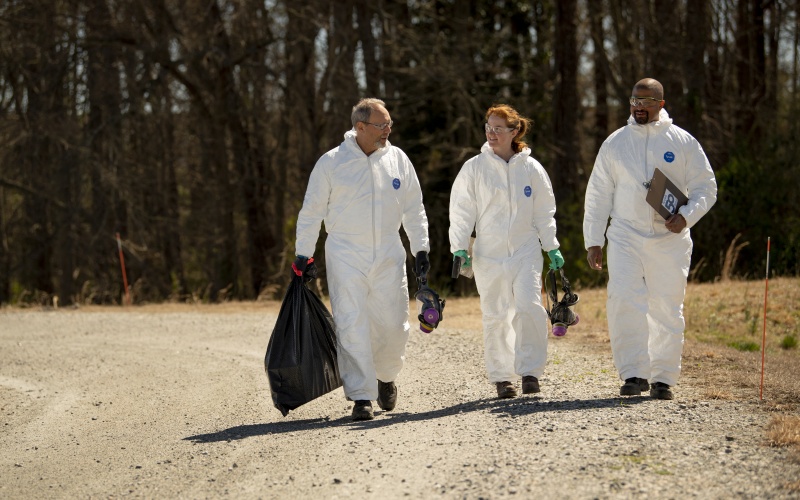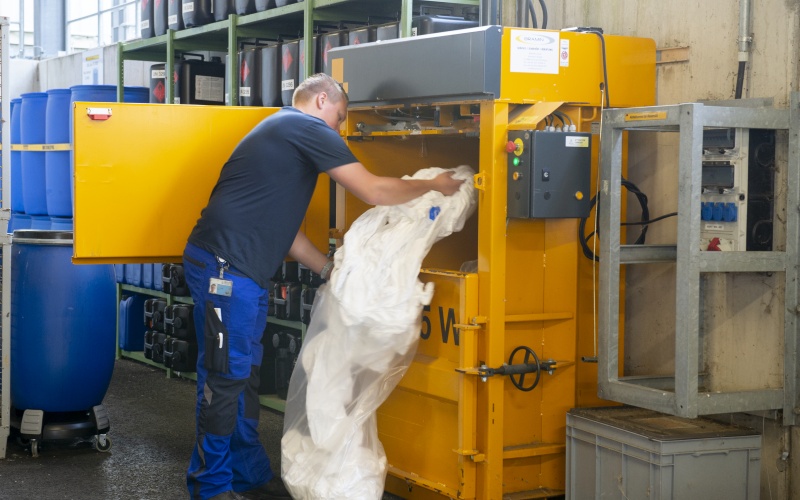Sustainable PPE Selection: How Circular Practices Reduce Waste and Emissions
In the world of occupational health and safety, the selection of personal protective equipment (PPE), such as protective garments, is a matter of paramount importance. But the choice of PPE is no longer solely about personnel safety: environmental stewardship is increasingly important. This raises new challenges for HSE managers.
written by Steve Marnach, EMEA Training Manager & Specialist Critical Environments, Dupont Personal Protection
For example, disposable coveralls may offer vital protection for front-line workers, but they are also a significant source of plastic waste and carbon emissions – not least because PPE packaging is often not recycled either. The time has come for health and safety professionals to embrace circular economy principles in their PPE strategies.
A circular economy centers on minimizing waste, keeping materials in use, and supporting more regenerative and restorative systems. Textiles, including the materials used for making protective garments, offer significant potential for improvement. The UK's Waste and Resources Action Programme (WRAP) has shown that enhancing product longevity could halve the carbon and water footprints of the textile sector by 2030[1].
To achieve circularity and deliver on sustainability, collaboration throughout the value chain is essential. HSE managers and PPE manufacturers need to work far more closely to develop circular practices that reduce the environmental impact of PPE from design through to the end of use.


Reducing impacts
There are some key questions that HSE managers can ask to identify whether their preferred PPE manufacturer is applying circular principles. For example, transportation is a major contributor to carbon emissions, so check whether garments can be manufactured locally, or what method of transportation will be used.
Check whether renewable energy is used during garment manufacture. Many Dupont protective garments are made from a unique, lightweight, and durable material called Tyvek. Dupont Tyvek manufacturing locations use renewable energy credits and Guarantees of Origin to power 100% of their operations.
Packaging is another area of focus. Key considerations here are whether garments are wrapped singly or in bulk, and whether the packaging material is recyclable and/or contains recycled content. In 2015, DuPont introduced Tyvek 500 Xpert Eco Packs, which has removed 820kg of solid waste per 35,000 garments. We also have an ambition to replace paper-based instructions for use (IFUs) with electronic QR codes as soon as European legislation allows it.
Recycling is key to the circular economy. Although the law requires HSE managers to dispose appropriately of contaminated PPE, there are now viable options to recycle uncontaminated garments. Ask whether your PPE provider offers recycling initiatives. For example, Dupont has conducted successful trials for a recycling scheme that means customers can ship their non-contaminated Dupont Tyvek garments in large batches directly to a local recycler. By adhering to the Tyvek protective apparel recycling referral program, HSE managers can introduce circular practices and contribute to lowering carbon emissions.
Lifecycle optimization
Of course, the best way to support a circular economy is to create less waste in the first place. This makes lifecycle considerations central to selecting a PPE partner. Look for more durable garments, which will last longer and do not need replacing as often. Also check to see if coveralls are made of mixed materials, how easy these materials are to separate and recycle, and whether there is a market for the recovered material. For example, Dupont Tyvek fabric is highly resistant to abrasion and tears, which can extend garment shelf-life and significantly reduces the number of items that HSE managers must discard. It is spun from a single high-density polyethylene (HDPE), which is easily extracted for recycling and reuse in multiple applications.
Disposal is the last option in the circular economy. There is no other practical option for contaminated protective garments: but HSE managers can make a difference here as well. For example, choose PPE made from materials that do not produce hazardous substances after incineration. Also, try to select PPE made with lighter fabrics. This has no impact on safety but a big impact on the planet because heavier materials generate more waste. Tyvek material is typically 20% to 50% lighter than microporous film and spunbond-meltblown-spunbond (SMS) alternatives.
Final word
Safety and sustainability go hand in hand. Working more closely with manufacturers such as Dupont, HSE managers can support the transition to a circular economy and develop new ways to reduce their PPE carbon footprint across the products' lifecycle. Adopting more sustainable PPE sourcing also makes sound business sense, by reducing garment replacement frequency, waste, and disposal costs.
Business Partner
Dupont de NemoursRue Général Patton
2984 Luxembourg
Luxembourg
most read

GIT SECURITY AWARD 2026 - The winners have been announced!
GIT SECURITY AWARD 2026: The best safety and security solutions of the year - now an overview of all winners

Integrated and Futureproof: Traka’s Next Chapter
Interview with Stefni Oliver on Traka’s Vision for the Future

The Benefits of AI-based Video Surveillance Solutions for Sports Venues
Dallmeier Interview: Artificial intelligence Makes Stadiums Smarter

Security management, building security & perimeter protection: the winners of category E at the GIT SECURITY AWARD 2026
GIT SECURITY AWARD 2026: Security management, building security & perimeter protection - an overview of the most innovative solutions









